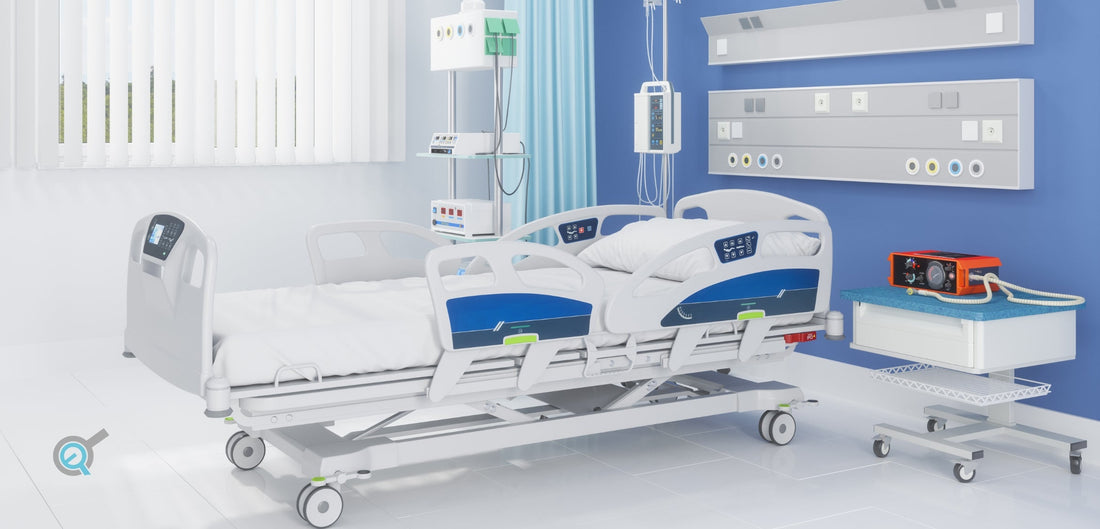In the ever-evolving world of healthcare, medical furniture is no longer just about functionality - comfort and patient experience are becoming equally critical. Among the various components that enhance the utility of medical furniture, linear actuators stand out as pivotal elements that significantly improve both the efficiency of healthcare providers and the comfort of patients. In this blog post, we’ll delve into the latest trends in medical furniture automation, examining how they address patient needs, the design innovations driving these changes, and what the future holds for this intriguing technology field.
Understanding Patient Needs

Patient comfort is no longer a luxury; it's a necessity. Today’s patients expect a healthcare environment that is as soothing and supportive as it is functional. Automated medical furniture plays a crucial role in meeting these expectations by:
- Enhancing Mobility: Automated features such as adjustable heights and reclining options provide patients with greater control over their environment, making it easier for them to get in and out of beds or chairs.
- Reducing Pain and Discomfort: Medical furniture with automated massage functions, temperature control, and ergonomic designs can alleviate pain and discomfort, particularly for patients with chronic illnesses or those recovering from surgery.
- Improving Mental Well-being: A comfortable, automated environment can significantly reduce anxiety and stress, contributing to a more positive overall patient experience.
The integration of actuators has revolutionized the way we approach the functionality and adaptability of medical furniture. Adjustable features, once limited by static components, now benefit from the dynamic capabilities of linear actuators, allowing for seamless transitions and personalized configurations. This technology enables medical furniture to transform effortlessly to suit the needs of various ergonomic solutions, enhancing user comfort and efficiency.
Balancing Design Complexity with Functionality

Linear actuators provide the control and precision movement necessary to ensure smooth and reliable adjustments for medical furniture to implement innovative design elements. As a result, products are not only more versatile but also more sustainable, as they can adapt to the user's needs over time, reducing the need for replacements. This synergy between design and technology marks a significant step forward in creating adaptable, user-centric solutions.
Yet, the design complexity of these systems must not overshadow their practical application. Healthcare professionals require devices that are intuitive and reliable, minimizing the learning curve and potential for error. Actuators contribute to this by offering seamless integration with user interfaces, allowing for straightforward operation despite the underlying complexity. This ensures that medical staff can focus on patient care without struggling with complicated machinery.
Moreover, the adaptability of linear actuators allows for customization in medical devices, catering to specific needs without compromising on ease of use. This flexibility is vital in a field where patient requirements can vary significantly. By enabling devices to be tailored to different scenarios, linear actuators help maintain the delicate balance between advanced design and practical application.
Current Trends and Innovations in Medical Furniture Design

In recent years, a surge in smart technology integration with linear actuators has been seen in the medical furniture industry. This trend can be attributed to the growing focus on patient-centered care and the need for more efficient healthcare delivery systems found in the ranges of medical furniture.
The design of medical furniture is where form meets function and recent innovations that continue their breakthrough include:
Motorized Adjustments: The latest innovations in actuator technology focus on improving precision through positional feedback, reliability, and electrical power efficiency. These advancements have allowed for smoother and quieter adjustments, which are crucial for patient comfort and reducing stress. Additional features such as quick-release manual override designs allow for operation during power outages.
Modular Designs: These allow for easy customization and scalability. Components can be easily reconfigured or expanded, adapting to changing requirements without the need for complete overhauls. This adaptability is particularly valuable in environments where space and functionality must be optimized, such as in urban living spaces or multifunctional work areas.
Sustainable Materials: With a growing emphasis on sustainability, many manufacturers are using sustainable materials that are both durable and easy to clean. This balance ensures that patient comfort can be met while reducing our environmental impact.
Intuitive Interfaces: User-friendly controls and interfaces are becoming standard. Touchscreens and voice-activated commands make it easier for both patients and healthcare providers to adjust settings without needing extensive training.
The Future for Medical Furniture

The future trends of medical furniture automation offer endless possibilities, driven by emerging advancements in technology and a deeper understanding of patient needs. Patients today expect more personalized and responsive care, and medical furniture that adapts to their specific needs plays a crucial role in this:
Actuator Advancements: As actuator technology continues to advance, it will enable more customizable and adaptive furniture solutions, enhancing patient autonomy and satisfaction. Moreover, the integration of smart actuators with IoT capabilities enables remote monitoring and control, allowing healthcare providers to adjust settings based on patient needs to enhance the overall patient experience.
AI Integration: Artificial Intelligence could soon play a significant role in predictive maintenance and personalized patient care. AI algorithms could analyze data such as the inputs from smart furniture such as hospital beds to predict and prevent complications like bedsores.
Telemedicine Compatibility: As telemedicine becomes more prevalent, we can expect to see medical furniture that supports virtual consultations, equipped with built-in cameras and communication tools.
Sustainability Efforts: Manufacturers are increasingly adopting eco-friendly materials and processes such as using recycled materials, minimizing production waste, and designing durable products for longevity. These efforts align with global environmental goals while meeting the expectations of healthcare institutions and patients who are increasingly conscious of ecological issues.
Augmented Reality (AR): Augmented reality has the potential to guide patients and caregivers in using complex medical furniture features, ensuring optimum utilization and enhanced patient outcomes.
IN SUMMARY
The latest trends in medical furniture automation are reshaping the healthcare landscape by balancing patient comfort with functional design. As we look to the future, many emerging technologies and innovations promise to bring even more intriguing possibilities to this evolving field.
As one of the top suppliers of electric linear actuators, Progressive Automations offers industry-leading flexibility, quality, support, and field experience. If you have any other questions about what we can offer for your OEM needs, please do not hesitate to reach out to us! We are experts in what we do and want to ensure you find the best solutions and suppliers.
sales@progressiveautomations.com | 1-800-676-6123




